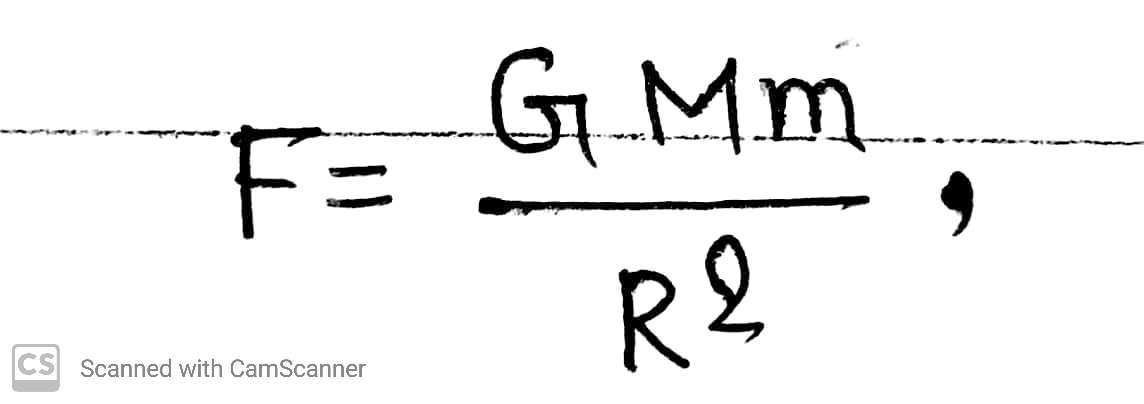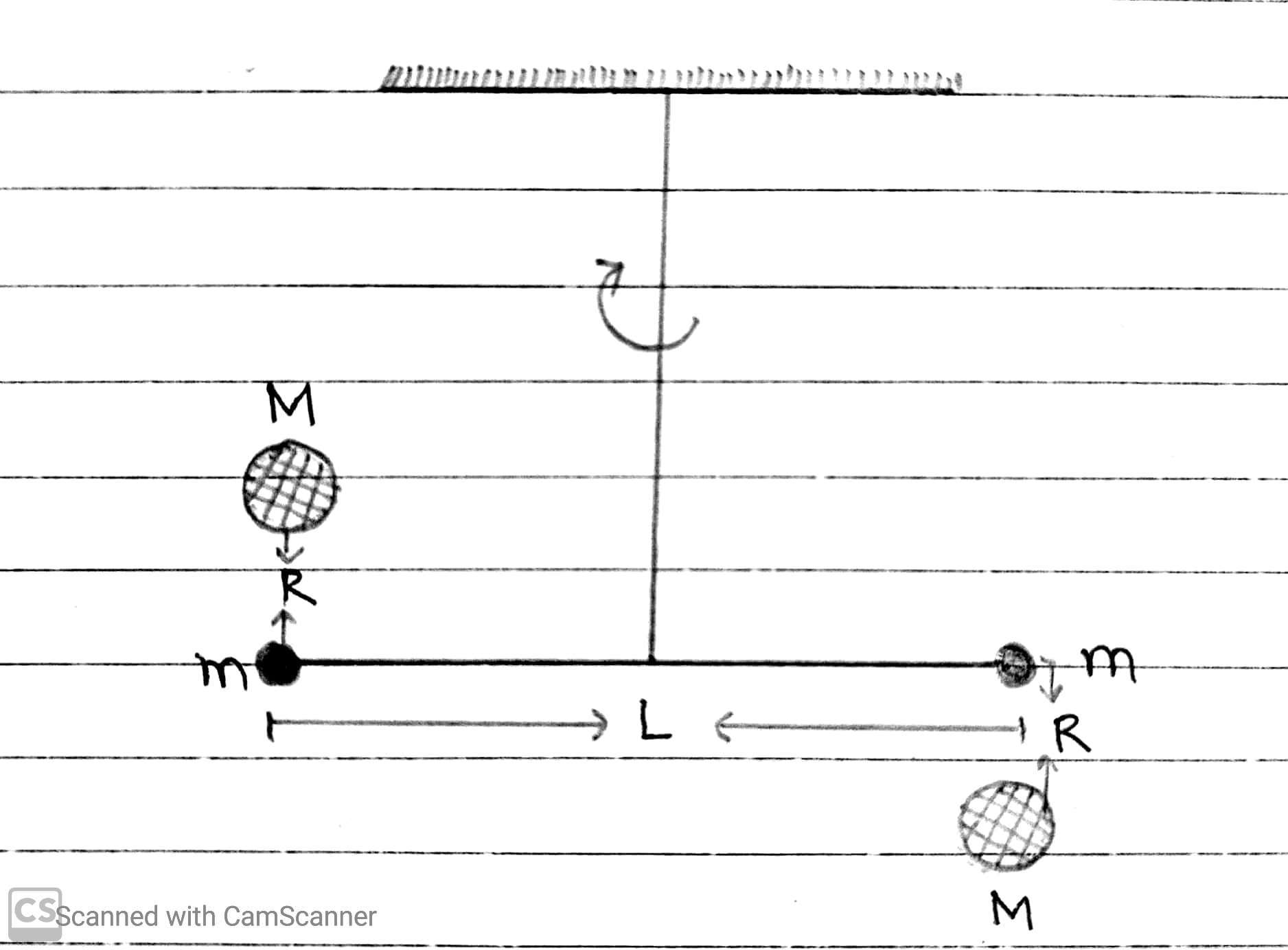The value of the gravitational constant G was first determine experimentally by English scientist Henry Cavendish in 1798.
Two small lead spheres of mass m each are connected to the end of a rod of length L which is suspended from its midpoint by a fine quartz fibre, forming a torsion balance.
Two large lead spheres of mass M each are brought close to small ones but on opposite sides.
As the small spheres move towards the larger ones under the gravitational attraction. Thus, the gravitational force on each small sphere due to big sphere is

Where R is the distance between the centre of the large and its neighbouring small sphere.

Due to this force, the resultant gravitational force on the bar is zero but a gravitational torque acts on it. The value of gravitational torque on the bar

Due to this gravitational torque, the bar is rotates through an angle θ. If τ is restoring torque per unit twist of the thin wire used, then restoring torque = τθ.

Knowing all the quantities on the right hand side from the experiment, the value of G can be determined. Since, Cavendish’s experiment, the measurement of G has been improved upon. The currently accepted value of G is 6.67×10⁻¹¹ N-m²/kg².
NCERT Class 11 Physics Book PDF Free Download
Also Read
SL Arora Class 11 Physics Book PDF Free Download
All In One Arihant Class 11 Physics Book PDF Free Download
